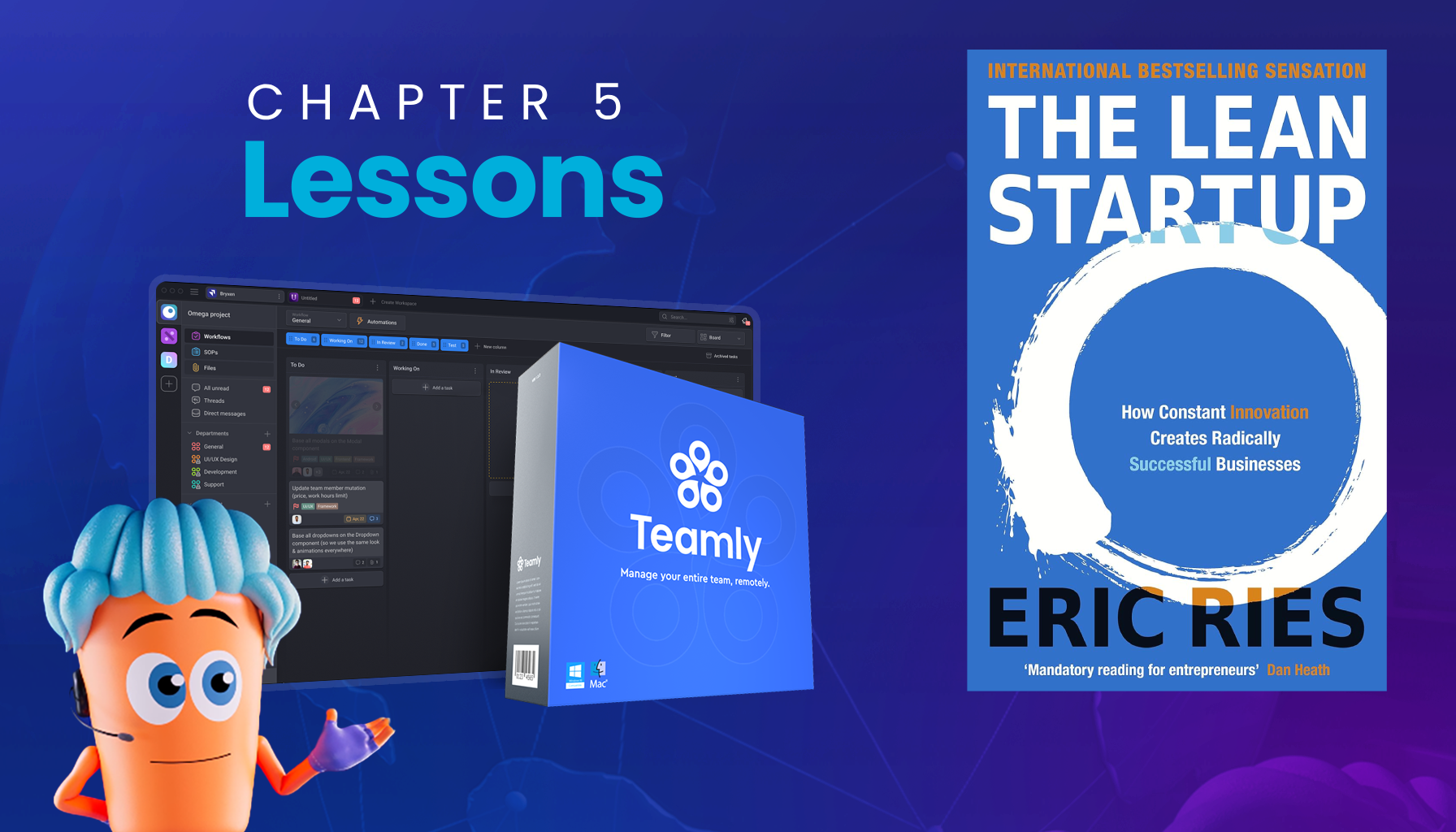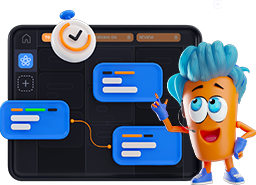
Click the button to start reading
Lessons from The Lean Startup By Eric Ries: Chapter 5
In the world of startups, Eric Ries’ The Lean Startup is more than a book—it’s a blueprint for navigating uncertainty.
Chapter 5, titled “Leap,” offers some of the most actionable insights for entrepreneurs and teams striving to innovate. It’s all about testing assumptions, engaging with customers, and making data-driven decisions to build products that resonate.
This chapter isn’t about taking blind risks. Instead, it’s about replacing guesswork with disciplined experimentation. Ries walks readers through the critical steps of turning leaps of faith—those unproven but essential assumptions—into validated insights.
If you’ve ever wondered how to bridge the gap between a bold idea and a successful business, this chapter is the guide you’ve been waiting for.
Leaps of Faith: The Foundation of Every Startup
At the heart of every startup are leaps of faith—core assumptions that define the business.
These assumptions often fall into two categories: the value hypothesis and the growth hypothesis. Together, they answer the most fundamental questions: Does the product solve a real problem for customers? And can it scale sustainably?
Consider Facebook in its early days. It wasn’t the first social network, nor did it have the most features. Yet it outpaced competitors by validating its hypotheses quickly.
The value hypothesis—whether users would find it compelling—was proven by the sheer amount of time people spent on the platform.
The growth hypothesis—whether it could scale without heavy advertising—was validated through its rapid adoption across college campuses. By focusing on these key metrics, Facebook laid the groundwork for its meteoric rise.
For modern entrepreneurs, these leaps of faith serve as a litmus test. Rather than building blindly, they encourage teams to focus on what truly matters: proving that their idea creates value and can grow.
This disciplined approach not only reduces risk but also accelerates the path to success.

It’s Not About Timing—It’s About Execution
Many people attribute startup success to being in the right place at the right time. But Ries dismantles this myth.
For every Henry Ford, there were hundreds of other automobile entrepreneurs in the early 20th century who failed despite having access to the same opportunities. Timing might create an opening, but execution determines who succeeds.
Facebook’s story reinforces this lesson. In 2004, it wasn’t the first social network targeting college students—competitors like MySpace and Friendster had a head start. What set Facebook apart was its relentless focus on validating assumptions and refining its approach.
By understanding what worked and discarding what didn’t, Facebook was able to outperform its rivals.
The takeaway here is clear: success isn’t about luck or timing; it’s about preparation, adaptability, and execution. Entrepreneurs who embrace this mindset are better equipped to navigate the unpredictable challenges of building a business.

Scott Cook’s Early Lessons with Intuit
One of the most compelling examples in Chapter 5 is Scott Cook’s journey in founding Intuit.
Cook didn’t start with a product; he started with a question: “Do people find it frustrating to pay bills by hand?” This question drove his initial conversations with potential customers, and the answers provided a crucial insight—there was a real pain point waiting to be solved.
What’s remarkable about Cook’s approach is what he didn’t do. He didn’t pitch a solution, showcase product features, or try to sell an idea. Instead, he focused entirely on understanding the problem.
This customer-first mindset allowed him to identify a massive opportunity: if Intuit could address this pain point, it could build a product with broad appeal.
For startups today, Cook’s story is a powerful reminder of the value of listening. Before building anything, take the time to engage with your audience.
Tools like Teamly can help streamline this process by facilitating collaboration and capturing insights from customer interactions. By aligning your team around real customer needs, you set the stage for success.

From Insights to Action: Crafting the Customer Archetype
Once you’ve identified a problem, the next step is to craft a customer archetype—a detailed profile of your target audience.
This archetype goes beyond demographics; it’s a comprehensive view of your customer’s needs, motivations, and pain points. It serves as a guiding star for product development, ensuring that every decision aligns with the customer’s perspective.
However, Ries is quick to caution against treating the archetype as a fact. In the early stages, it’s a hypothesis that needs to be tested and refined.
This iterative approach is central to the Lean Startup methodology. It’s not about creating a perfect model upfront; it’s about learning and adapting through real-world interactions.
Lean UX is a particularly effective framework for this process.
By combining rapid prototyping with user feedback, Lean UX enables teams to iterate quickly and avoid the pitfalls of traditional design. It’s an approach that prioritizes learning over perfection—a philosophy that resonates deeply with Ries’ principles.

Balancing Analysis and Action
One of the recurring themes in this chapter is the importance of balance. Entrepreneurs often fall into one of two traps: rushing to build a product without validation or becoming paralyzed by endless analysis. Both are costly mistakes.
The Minimum Viable Product (MVP) is Ries’ solution to this dilemma.
An MVP is the simplest version of your product that allows you to test your core assumptions. It’s not about launching a half-baked product; it’s about learning as quickly as possible with minimal resources.
Dropbox’s early days offer a perfect example. Instead of building a full-fledged product, the team created a simple video explaining their concept. This video generated valuable feedback and validated the demand for their idea, all without writing a single line of code. It’s a testament to the power of starting small and learning fast.
By focusing on validated learning, startups can avoid the pitfalls of overanalysis and overcommitment. It’s a mindset that empowers teams to take action without losing sight of their goals.

Toyota’s Genchi Gembutsu: A Lesson in Empathy
One of the most fascinating concepts in Chapter 5 is Toyota’s principle of Genchi Gembutsu, which translates to “go and see for yourself.”
This philosophy emphasizes the importance of firsthand observation. It’s not enough to rely on reports or secondhand information; real insights come from direct engagement with the problem.
Yuji Yokoya, a Toyota engineer, exemplified this principle during the redesign of the Sienna minivan.
To understand how customers used their vehicles, Yokoya embarked on a cross-country journey, logging over 50,000 miles. His findings, such as the importance of child-friendly features, directly informed the design of the Sienna, leading to a 60% increase in sales.
This approach is a powerful reminder for startups: you can’t solve a problem you don’t fully understand.
Whether it’s observing customer behavior, conducting interviews, or testing prototypes, direct engagement is the key to meaningful innovation.
Eric Ries’ insights in Chapter 5 of The Lean Startup are a masterclass in how to test ideas, engage with customers, and build a product that delivers real value. Entrepreneurs looking for a roadmap to success will find invaluable lessons here.
Ready to dive deeper? Get your copy of The Lean Startup here.
















